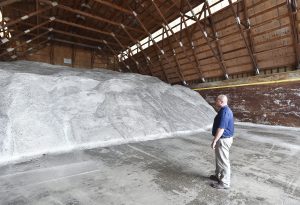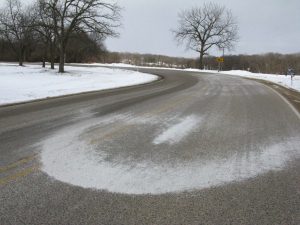With winter in full swing around the northeast, it is hard not to notice the ubiquitous white film on our vehicles and roads, not to mention in our homes and businesses. I was recently spreading some at my home when I decided to learn a bit more about its impact before applying more. What I found will certainly change some of my habits.
According to researchers, nearly 70% of salt applied to roads stays within that watershed; for us, that means it will likely end up in our local streams, reservoirs and the Bay. On its way to the Bay the sodium and chloride ions can impact both plant and animals negatively.
If not in the Bay, it may end up in your drinking water as chloride levels exceed standards in many wells and public water systems tested. We also see the roadside vegetation suffering from the excess of salt, not to mention the animals drawn into traffic and killed as they consume salt from the road.
While we already have TMDL (total maximum daily load) requirements for sediment and certain nutrients, there is not currently one for chlorides (although I have heard it may be in the works). This would be a good first step.
What else can we do? Reconsider buying another bag of deicer and grab some sand instead; watch the road for animals lured by the salt; and encourage your local representatives to support TMDL requirements for chlorides.



